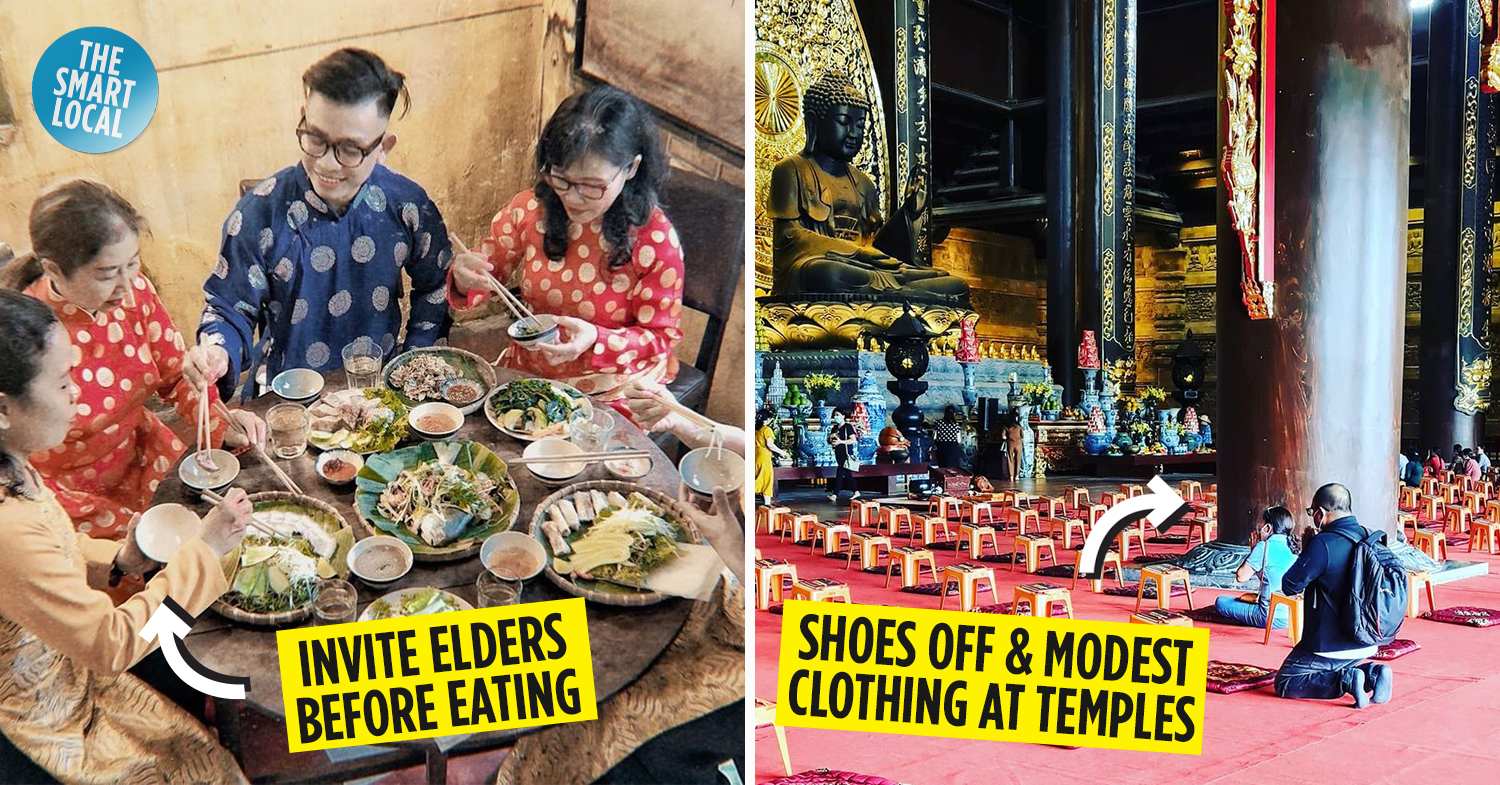Tips about etiquette in Vietnam
Learning about and adapting to a new culture is always a challenging task. Every culture has its nuances and unspoken rules that others judge you by, but few may bother to explain them to you. Naturally, Vietnam is no exception.
So, for those who’re planning a visit or a long-time stay in Vietnam, here are 20 etiquette tips from a born and raised Vietnamese to help you flatten the learning curve and earn praise from your hosts.
Social etiquette in Vietnam
First off, let’s start with what to do and say in some common scenarios you might encounter daily during your time in Vietnam.
1. Use the proper titles when addressing someone

Everyone in Vietnam is addressed differently depending on their age
Image credit: @bin_ron_rang
Now this is a thing common in many Asian countries, but for our Western readers who might be unfamiliar with the concept, we Vietnamese don’t simply use “I” to refer to ourselves and “you” to call the other person in a conversation. Instead, we use different titles to address people based on their age and gender.
In total, there are probably dozens of titles, and they can vary depending on which region you’re in, so we’re not going to go too deep into it. But here are the most basic ones that you should know to avoid awkward encounters.
When speaking with a man slightly older than yourself – like, by one to a few years – call him “anh”. The word literally translates to “older brother”. The female equivalent is “chị”, meaning “older sister”.
Vice versa, address someone slightly younger than you as “em” – the word applies to both genders – and they’ll call you anh or chị instead.
For people around your parents’ age, use the titles “chú” when speaking to a man, and “cô” for a woman. The words mean “uncle” and “aunt” respectively. Meanwhile, an elderly man should be called “ông”, and an elderly woman can be referred to as “bà”.
On the other hand, if someone is around your kid’s or grandkid’s age, call them “cháu” – again, the word is gender-neutral.
Of course, the rules are not set in stone. As you can probably imagine, sometimes you just can’t tell how old a person is from their appearance. As such, it’s not uncommon for Vietnamese people to ask each other’s age when they first meet – though we only do that with someone around our own age and not when the other person is obviously much older. Still, we’d not advise doing so, as the question can still make people uncomfortable.
Yes, it is an intricate system that even we natives mess up sometimes, so don’t stress over it too much. Mistakes are expected from foreigners, and most likely nobody will judge you even if you got things wrong. Just know that it’ll please people greatly if you get their titles right.
2. Pass items to others with both hands
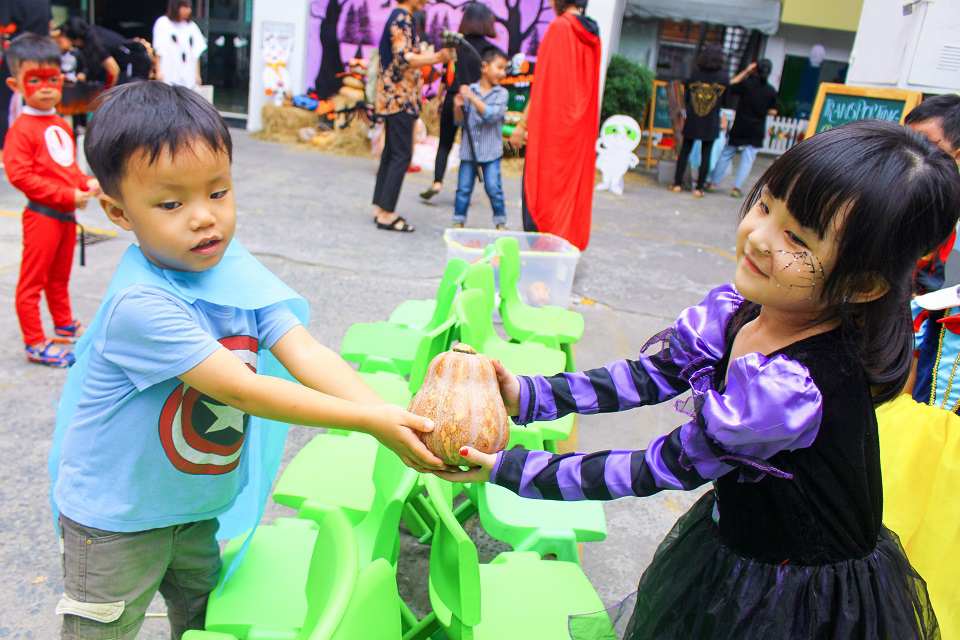
Image credit: Kindy City
As kids, we’re taught to always use both hands when we give or receive something. The act is seen as a gesture of respect, and it’s become the norm in our social interactions.
Of course, you don’t have to follow it to a T. In more informal contexts, such as between friends, it’s perfectly fine to pass things with only one hand. Just keep it in mind for when you want to show someone respect.
3. Avoid displays of affection with your partner in public
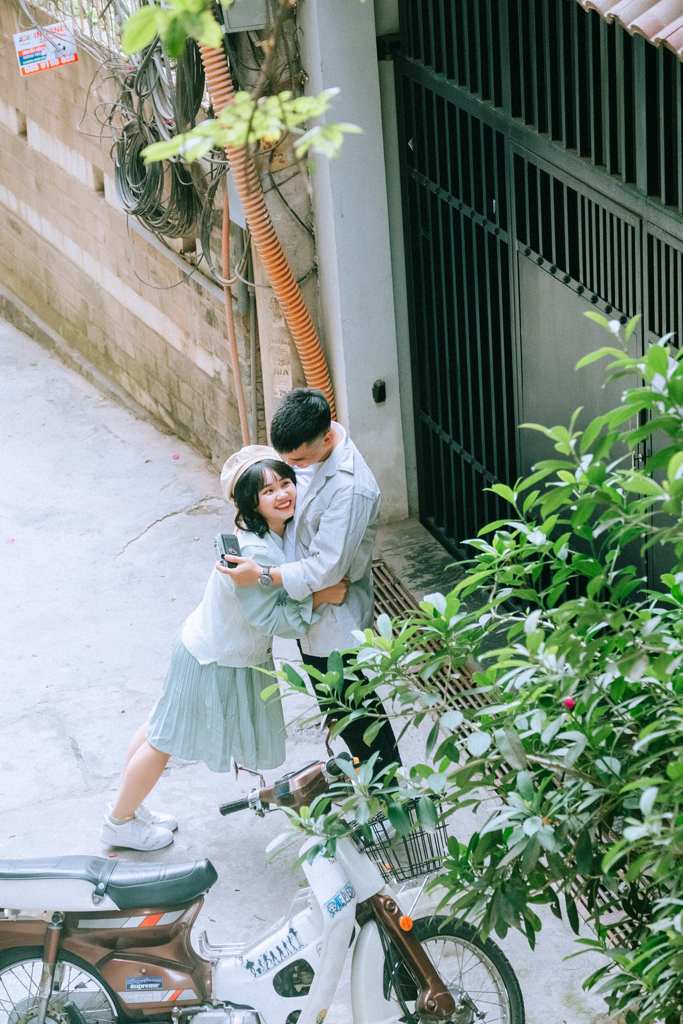
Image credit: Chuyện Của Hà Nội
Vietnam, like many other Asian countries, is what many would consider a more conservative culture, where people don’t usually show affection physically.
So if you travel with your partner, don’t act too fondly toward one another in public. Holding hands is fine, but hugging and kissing can make people around you uncomfortable.
In recent years, the younger generation has become more open-minded and won’t mind it as much, but older people can be less tolerant. It’s best to keep such interactions in private.
4. Don’t tap people on the shoulder
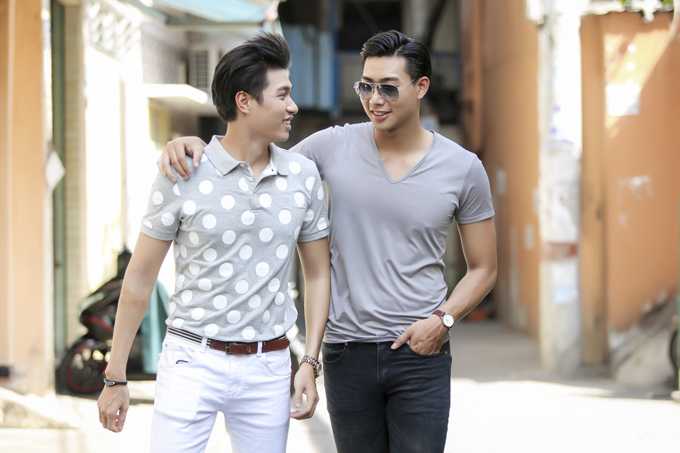
Image credit: Ngôi Sao
Slapping someone on the shoulder or putting your arm around them might be seen as friendly behavior, but we’d recommend you refrain from doing such acts with someone you’ve just met in Vietnam.
A common superstition in Vietnam is that being tapped on the shoulder will bring bad luck, so your display of goodwill might end up making them unhappy.
5. Accept treats from your host
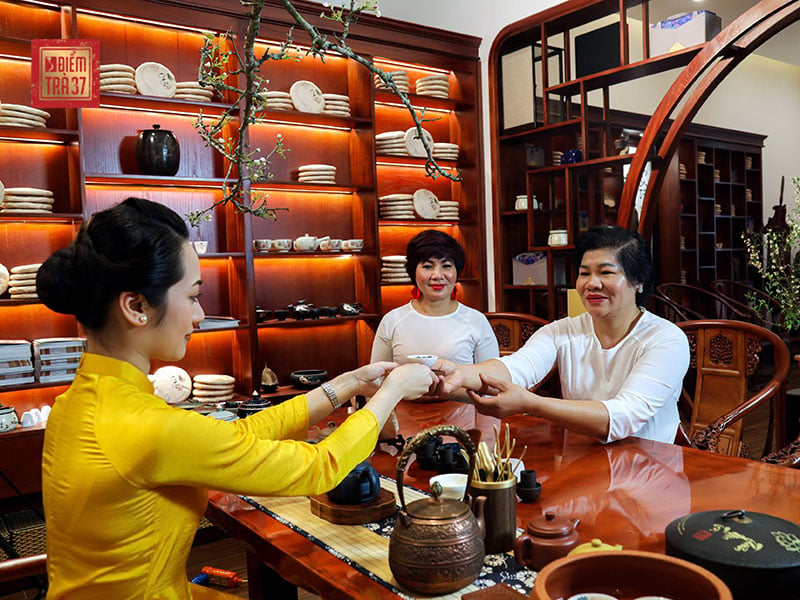
Image credit: Điểm Trà 37
When you visit someone’s house, your host will offer you small treats – it’s kind of the rule of hospitality here in Vietnam. These treats could be a small cup of tea, or sweets such as candies, or sunflower seeds and similar snacks.
The common etiquette for you, therefore, is to accept what is offered, using both hands as we mentioned in #2. Even if you don’t really feel like it, take a sip of the tea and munch on the snacks a little bit to show you appreciate their care.
6. If you’re a shop’s first customer of the day, don’t leave without buying something
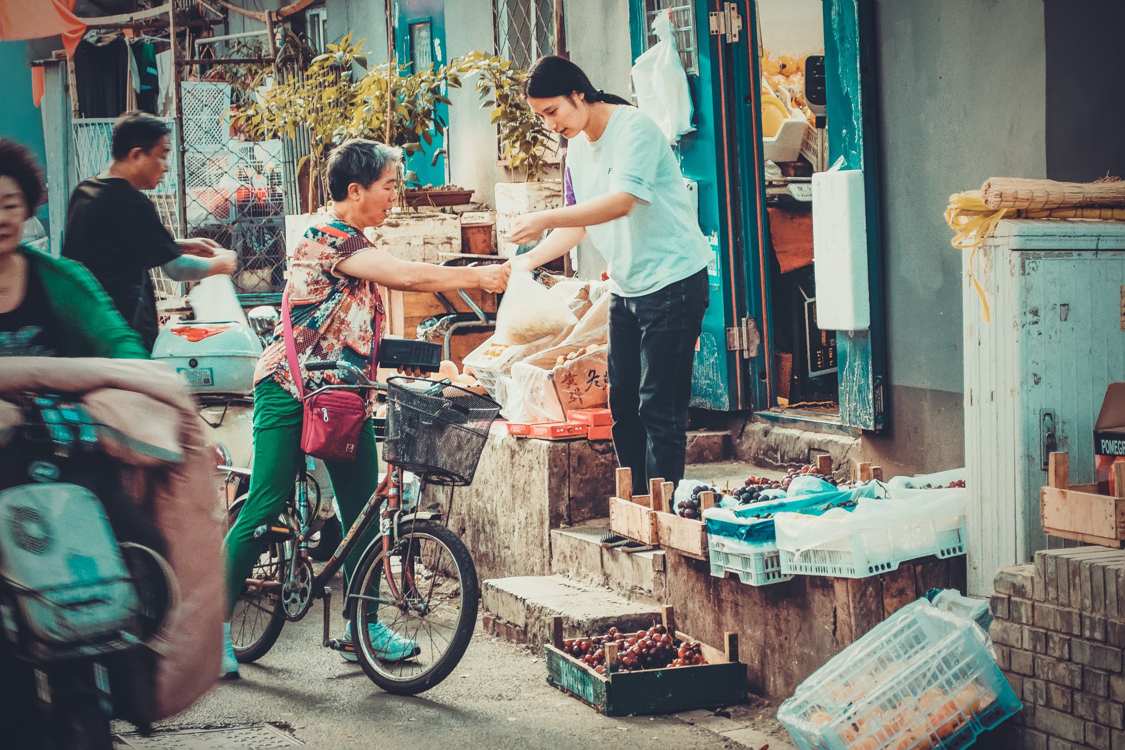
Image credit: zhang kaiyv
Vendors and shop owners in Vietnam are known to be very superstitious. Many believe that how well their business goes on a given day depends on the first customer they serve that day. A good first deal of the day supposedly signals that many more will come. Meanwhile, if the customer leaves without buying, it’s considered a sign that their goods will go unsold.
So if you drop by a shop early in the morning, buy something, if only to be nice to the owner. It doesn’t have to be something big – any small item will do.
In fact, in these situations, most sellers would be more willing to offer you a better price if you haggle. Just don’t push it too much.
7. Be mindful where you smoke, especially if you’re a woman

Image credit: Denx arman
There are arguments for and against smoking, but we’re not going to get into that debate. At the end of the day, it’s a personal choice. Just know that in Vietnam, smoking is considered more of a “men’s thing”, and a woman smoking can be frowned upon by some people.
Don’t get us wrong, it’s perfectly fine for a woman to smoke in a bar, a club, or other more laidback environments – provided she’s not in a no-smoking zone, of course. However, if you’re, say, invited to meet a friend’s family, remember that some, especially older people, are not going to take it kindly to the sight of you smoking.
On that topic, even for men, it’s best to avoid smoking in someone else’s house unless you know your host also smokes. To be extra safe, ask for permission first before you light your cigarette, and don’t smoke near the elderly and children.
Dining etiquette in Vietnam
Having friends over for a meal is our way of showing them our goodwill, and if you’re invited to a Vietnamese meal, remember these etiquette tips so as not to embarrass yourself and make your host uncomfortable.
Of course, you don’t need to try too hard to be courteous to the point where it makes you feel stressed. As mentioned, foreigners are given a lot of leeways – we Vietnamese are friendly people, and what’s important to us is that our guests enjoy themselves. Nobody’s gonna complain if you accidentally point your chopsticks the wrong way for a split second, or leave behind a couple of rice grains.
Still, if you can follow these rules, it’ll make them regard you that much more highly.
1. Wish everyone a good meal before digging in
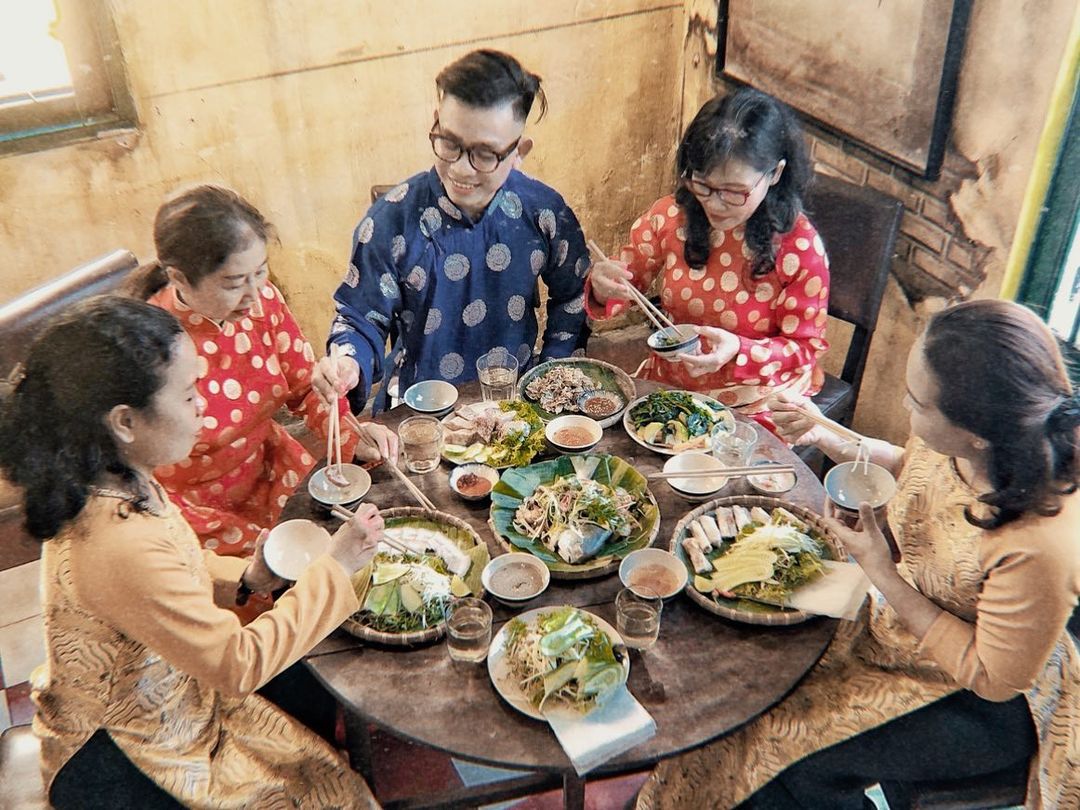
Image credit: @hichiko_nguyen
In case you haven’t realized by now, here in Vietnam we treat our elders with the utmost respect, and that applies to everyday occurrences such as mealtimes. If you are invited to a Vietnamese meal, it’s important that you wait for the elders to take their seats first before sitting down yourself.
Then, when everyone has been seated and had their utensils in front of them, we perform a cozy little ritual called “mời” (invite) before digging in. The process is simple, you say “Mời” plus a person’s title, starting with the oldest person present and work your way down. So, “mời ông/bà”, then “mời cô/chú”, and so on.
Basically, it’s a way for us to politely ask everyone to share the meal, kind of like how some people in the US pray before eating, or Japanese say “Itadakimasu”.
2. Don’t fill your rice bowl to the brim
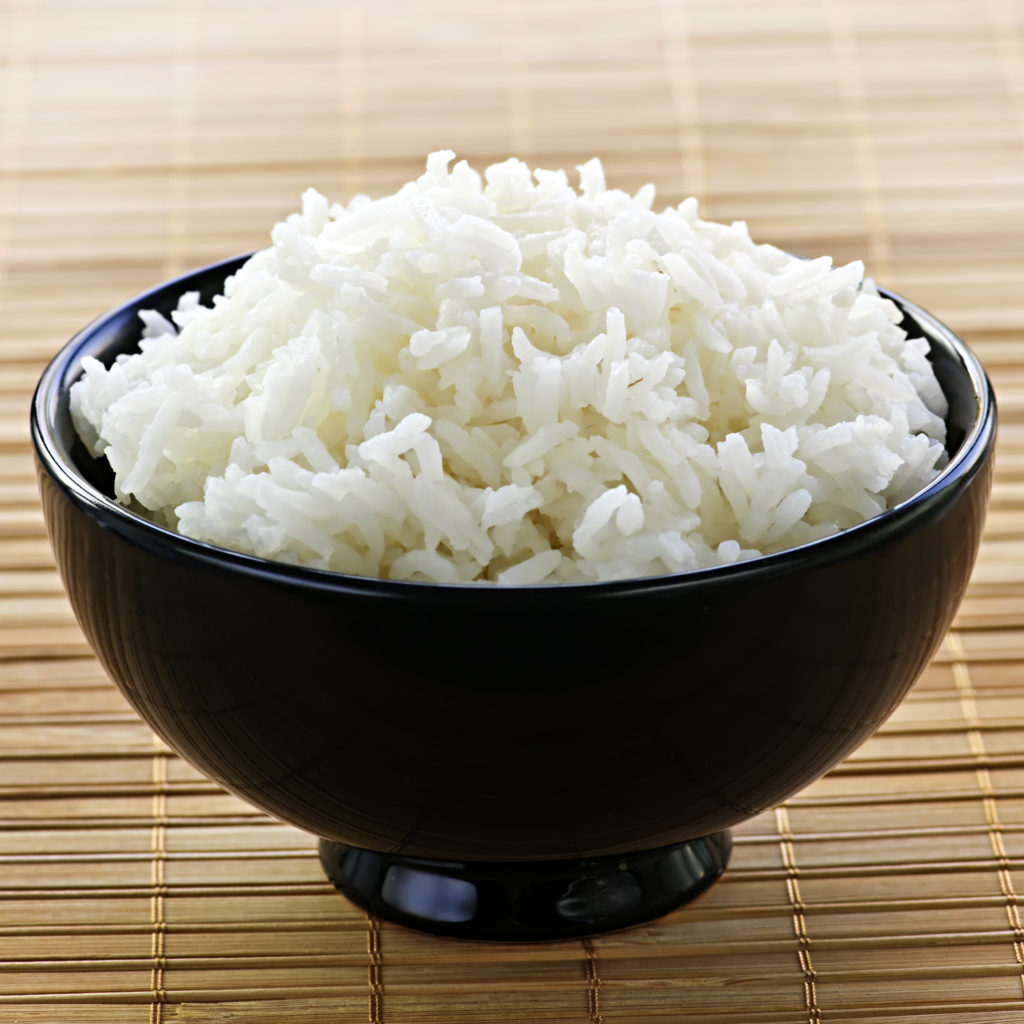
A bowl of rice filled to the brim is meant for the dead and should not be served to the living
Image credit: ststanislausparish.com
Yes, the memes about Asian meals are true. There will be rice. You are expected to eat it. And you are expected to know how.
The first thing to note here is that we Vietnamese never fill our bowls to the brim with only a single scoop of rice. The act is used only to serve rice at altars to the dead, so it is incredibly offensive to serve the living in the same manner. The proper way is to scoop at least two times, and fill the bowl only two-thirds of the way.
Most often, you won’t have to fill your own rice bowl as your host will do it for you. However, it is one of the essential rules of the Vietnamese dining table that you definitely should know.
3. Don’t plunge your chopsticks straight into your bowl
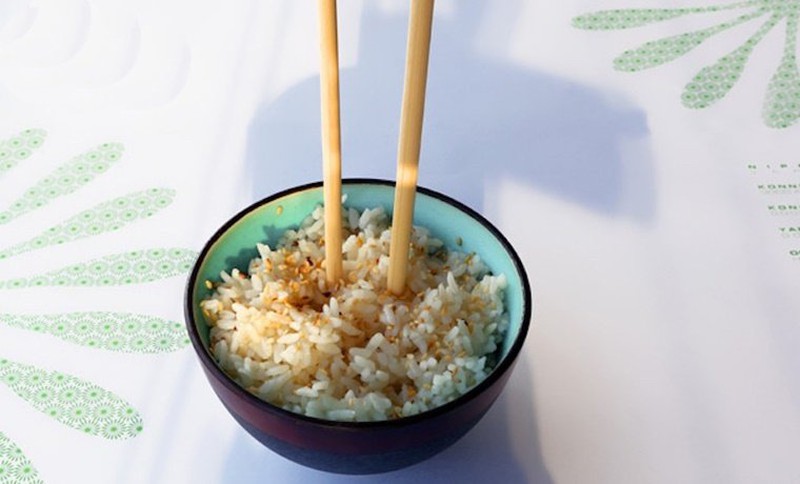
Image credit: kienthuc.net
Chopsticks are signature Asian utensils that many non-Asians will struggle with, but even if you’re already proficient with them, there are certain nuances that must be observed with their use.
For one thing, don’t plunge your chopsticks straight down into your rice bowl. The act makes the chopsticks look like incense sticks in front of a grave. As you can imagine, anything related to the dead should not be associated with the living.
4. Don’t knock your chopsticks into your bowl and create a ringing sound
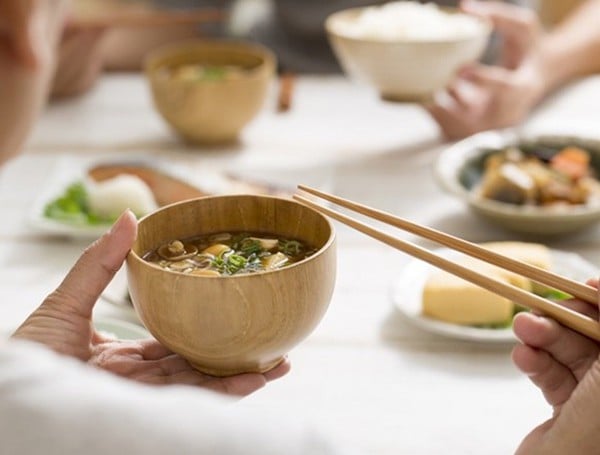
Image credit: An Ninh Thủ Đô
Have you watched scenes from Western movies where people knock on glasses with utensils to make a ringing sound to get everyone’s attention, maybe to propose a toast? Yeah… don’t do that in Vietnam with chopsticks, or you’re going to have a bad time.
It is believed here that the sound of chopsticks knocking on bowls will attract wandering hungry ghosts, who will gather and bring misfortune upon the household. So, don’t do that intentionally, and even if it’s inevitable that you will make some noise with your chopsticks and bowl as you eat, try to keep it down to a minimum.
5. Don’t point your chopsticks at someone
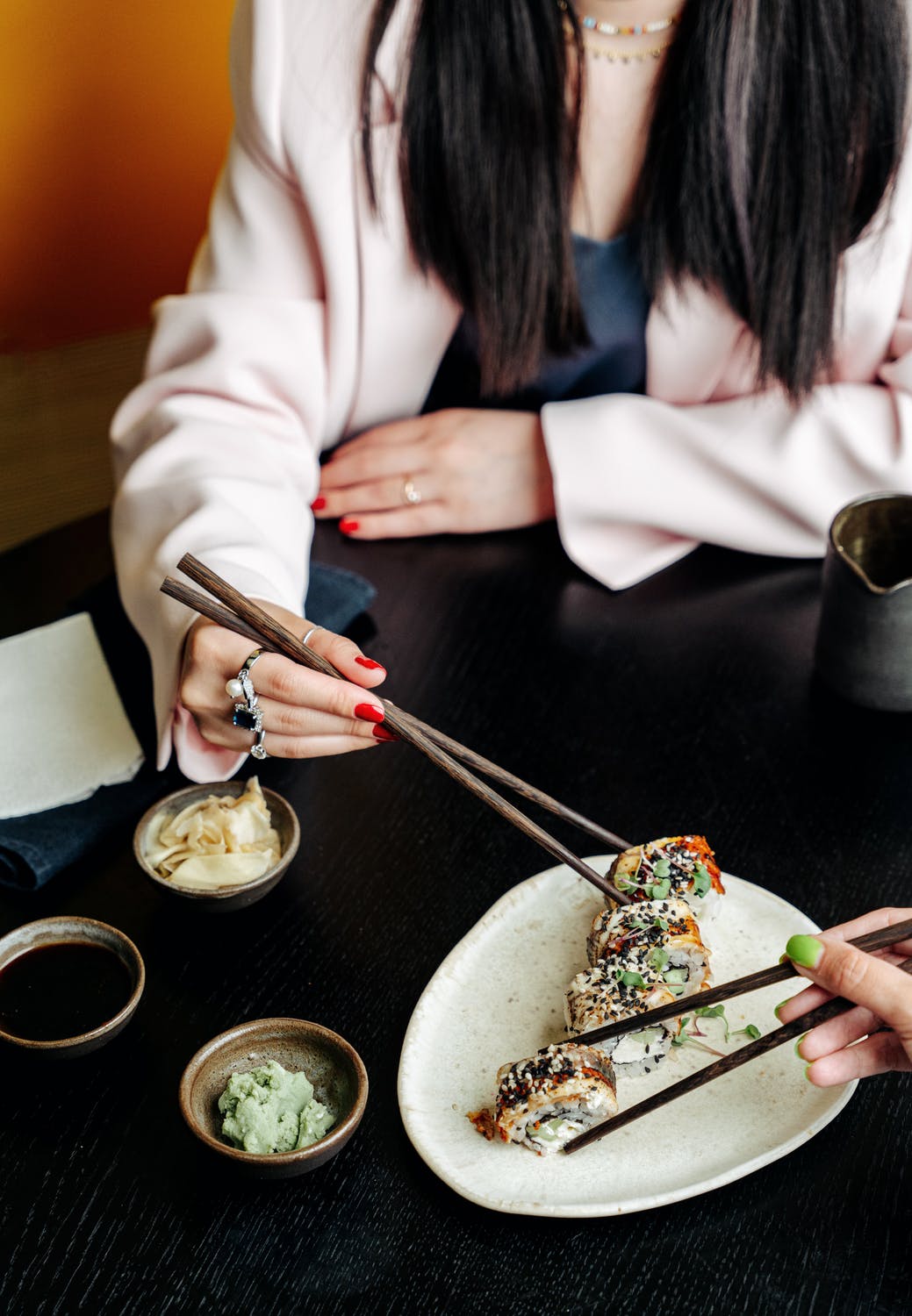
Image credit: Ivan Samkov
It’s probably common knowledge that pointing at people with anything is not nice, but there might be instances where you accidentally do so with chopsticks without meaning to. For example, someone might hand you something as you eat, and you might instinctively reach out with your chopsticks still in your hand to take it.
So, pay attention, and put your chopsticks down before you use your hands to take something or to gesture during a meal. It might sound like a tiresome rule, but with experience it’ll become second nature to you.
6. Put food in your bowl first before eating
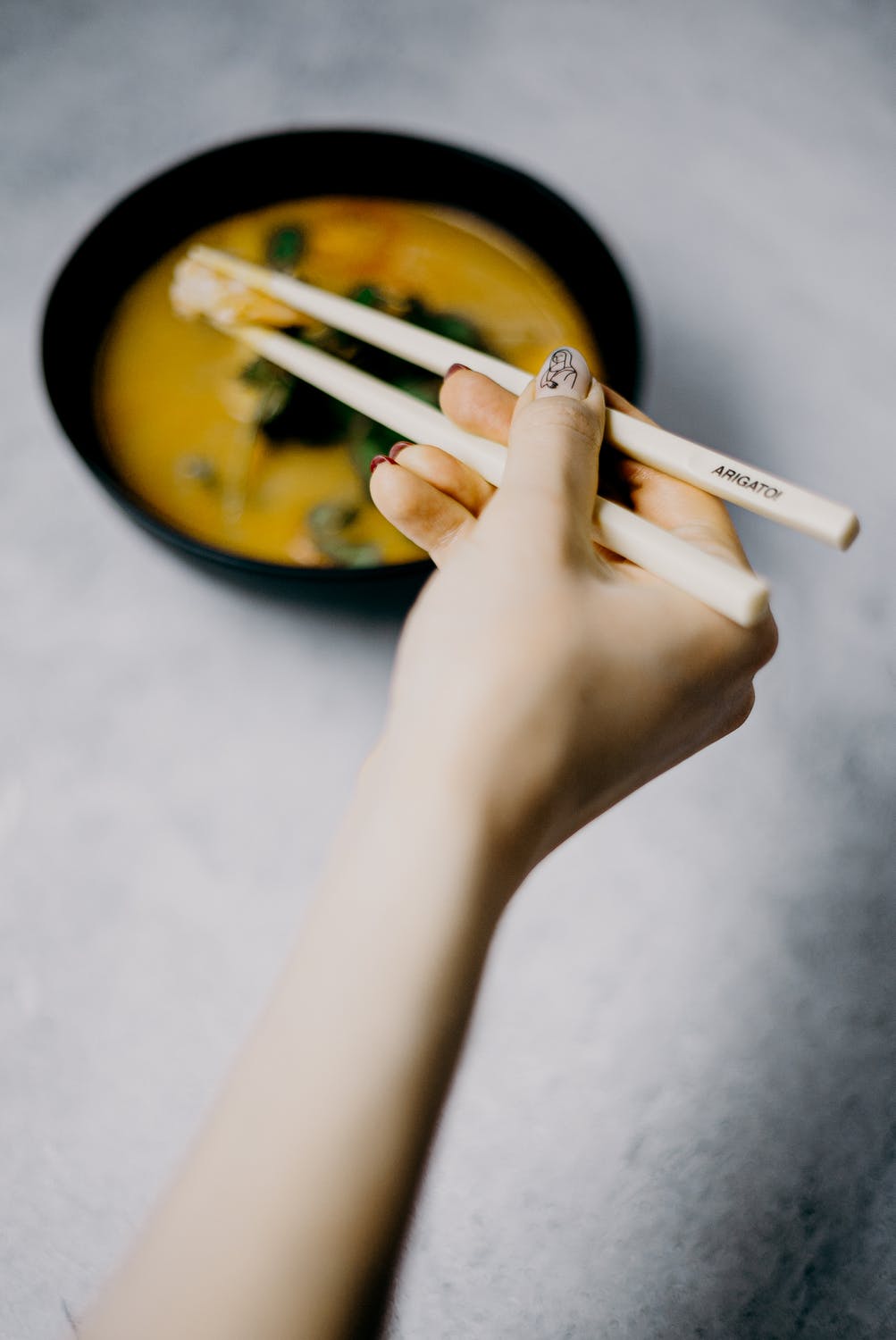
Image credit: cottonbro
In a typical Vietnamese meal, while each person has their own bowl, the food is displayed on plates on the table for everyone to share. We pick up the food from the plates, drop it in our bowl, then eat.
The part you need to note here is, drop the food in your bowl first, then eat it from there. Eating straight from the plate makes it look like you’re in a rush to eat as much and as fast as possible. It’s taken as a display of gluttony.
7. Don’t pass food directly from your chopsticks to someone else’s

Image credit: Doanh Nghiệp Việt Nam
It is also very rude to pass food from someone’s chopsticks to another’s. If you see a fellow diner struggling to reach food from a plate far from their position, pick up a piece of the food with your chopsticks and put it straight into their bowl.
Do note that the act is considered somewhat affectionate and should only be done if you know the other person well, or if it’s a child who needs assistance. If not, you can offer to help first, or just ask someone to pass the dish with the food closer to the recipient.
The rule applies when you’re on the receiving end as well. If someone picks up a piece of food for you, don’t use your chopsticks to grab it from theirs. Instead, put your chopsticks down and extend your bowl, preferably with both hands, for the other person to drop the food in.
8. Hold your bowl up to your face while eating
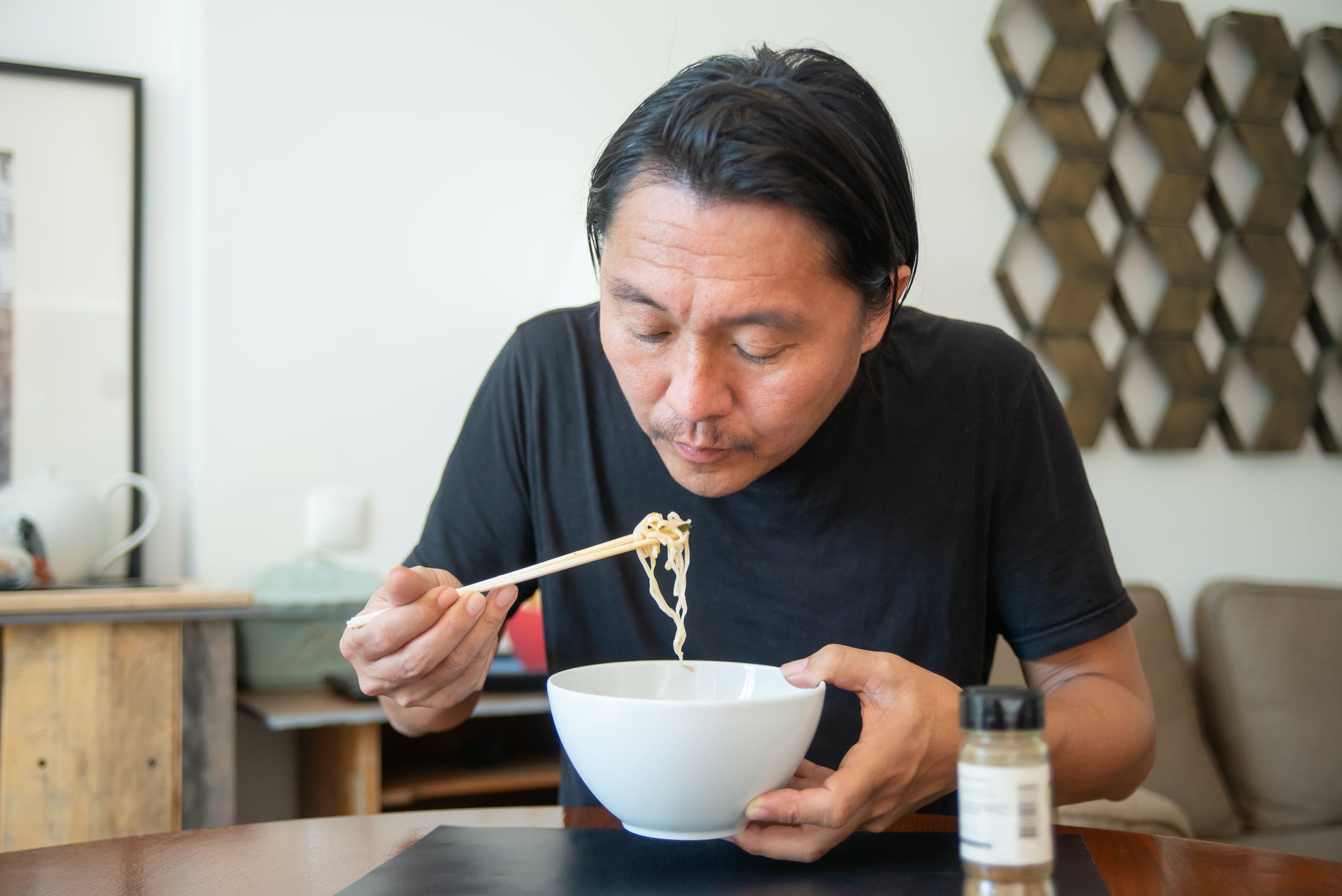
Image credit: Kampus Production
If you leave your bowl on the table, you’ll have to bend down very low to eat from it. The posture is not only uncomfortable, but also doesn’t look nice.
So the proper way to do it is to hold the bowl up near your face with your left hand, and eat using chopsticks in your right hand.
Even if you’re eating broth-based noodle dishes such as phở, which are often served in big bowls that are too hot and too cumbersome to hold up, use your chopsticks to put the noodles on a spoon, then eat. It’s ok to slightly bow your head eating this way, but don’t go too low.
9. Finish everything in your bowl
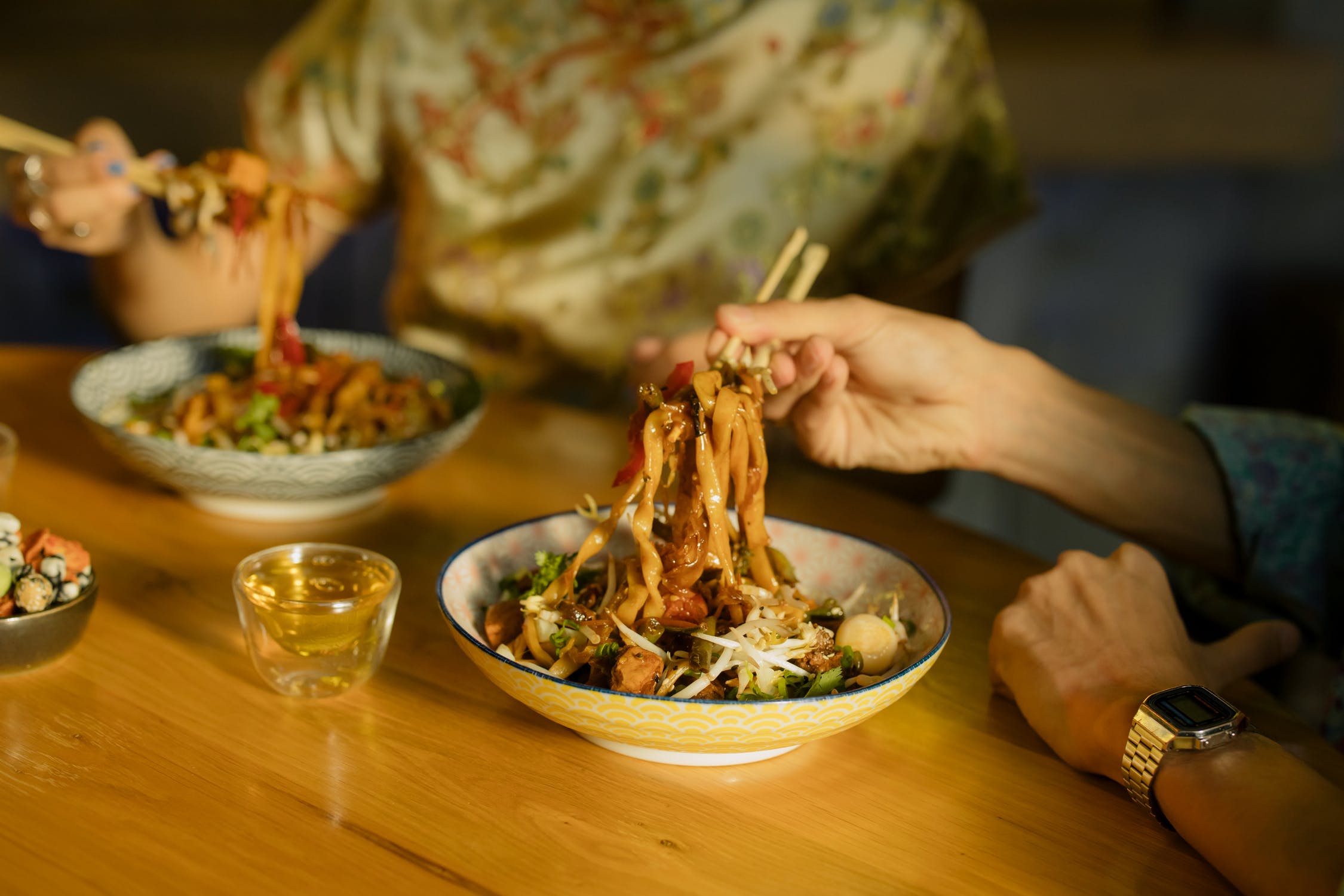
Image credit: cottonbro
This is probably not exclusive to Vietnam, but the common dining etiquette is to finish everything in your bowl. We’re talking about not leaving behind a single grain of rice here.
And don’t worry, you won’t have to pick every single grain with your chopsticks. Every Vietnamese meal should have a bowl of soup that you can pour over your rice to prevent it from sticking to the bowl, and then you can gulp the whole thing down.
10. If someone’s expected to be late, reserve food for them

A typical Vietnamese meal
Image credit: @comnha_hg
If someone is caught up in other businesses and is expected to arrive late for the meal, we reserve food for them on a separate plate that no one else is allowed to touch. Often, this plate will include the choicest parts from each dish as a sign of hospitality.
Of course, the guest must also be responsible and inform the host of their lateness at least a couple of hours before the meal. Also, if you’re in this situation, chances are you’ll finish eating when the host is cleaning up, in which case you should offer to help.
They will most likely tell you to just enjoy yourself and let them do their duty as hosts, but you know the saying – it’s the thought that counts.
Etiquette while visiting religious sites in Vietnam
Religious attractions make up a large portion of Vietnam’s tourism scene. Visit any major tourist destination, and there will be at least a couple of magnificent temples and pagodas for you to gawk at.
Architectural wonders though they might be, these places are also sacred places of worship, and a certain degree of respect is demanded from visitors. Here are some of the basics you need to know:
1. Dress conservatively
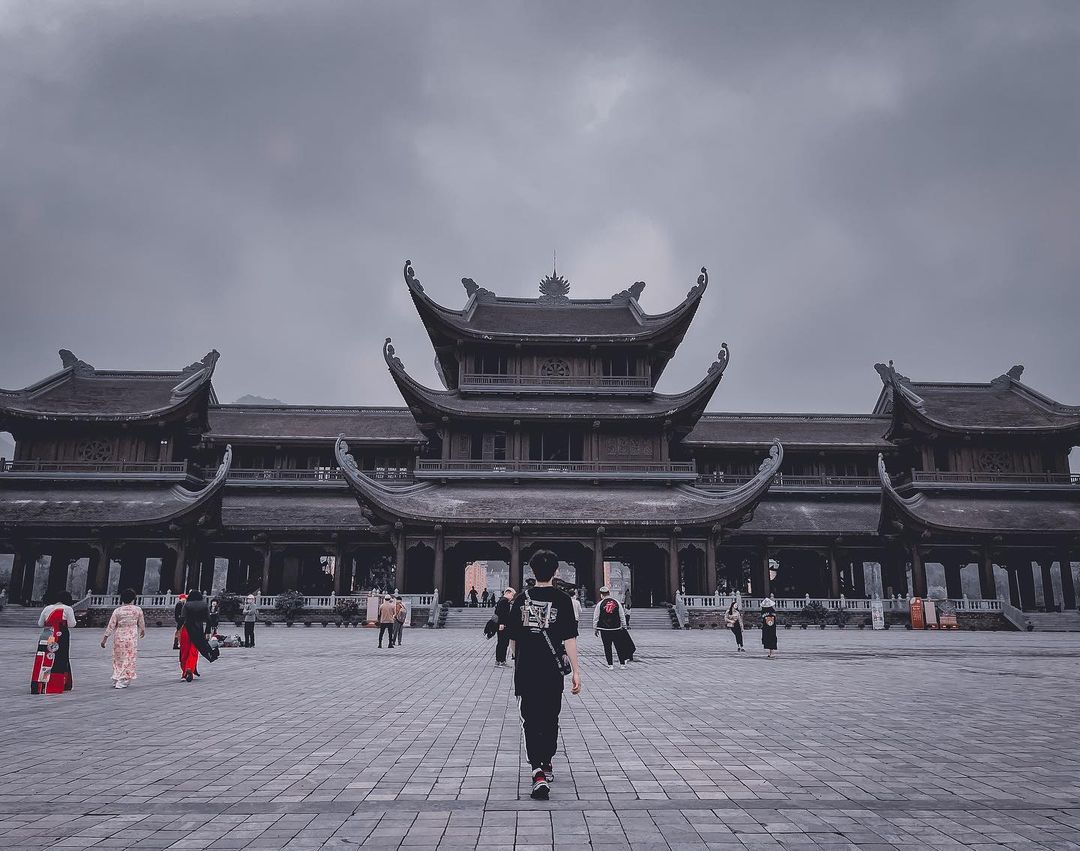
Wear long skirts or trousers at religious sites
Image credit: @hoacucthang9
Before anything else, your choice of clothing will be the first thing people look at, and it’s mandatory that you dress modestly.
What is considered “modestly” is up to interpretation, but in general, we’d say “below the knees” is a good rule to stick to. As for tops, swap out that sleeveless shirt in favor of at least a short-sleeved one if you’re a man, or wear a jacket over it. For women, avoid anything that exposes cleavage, your shoulders, and belly.
2. Don’t take pictures of the main altar – at least not directly
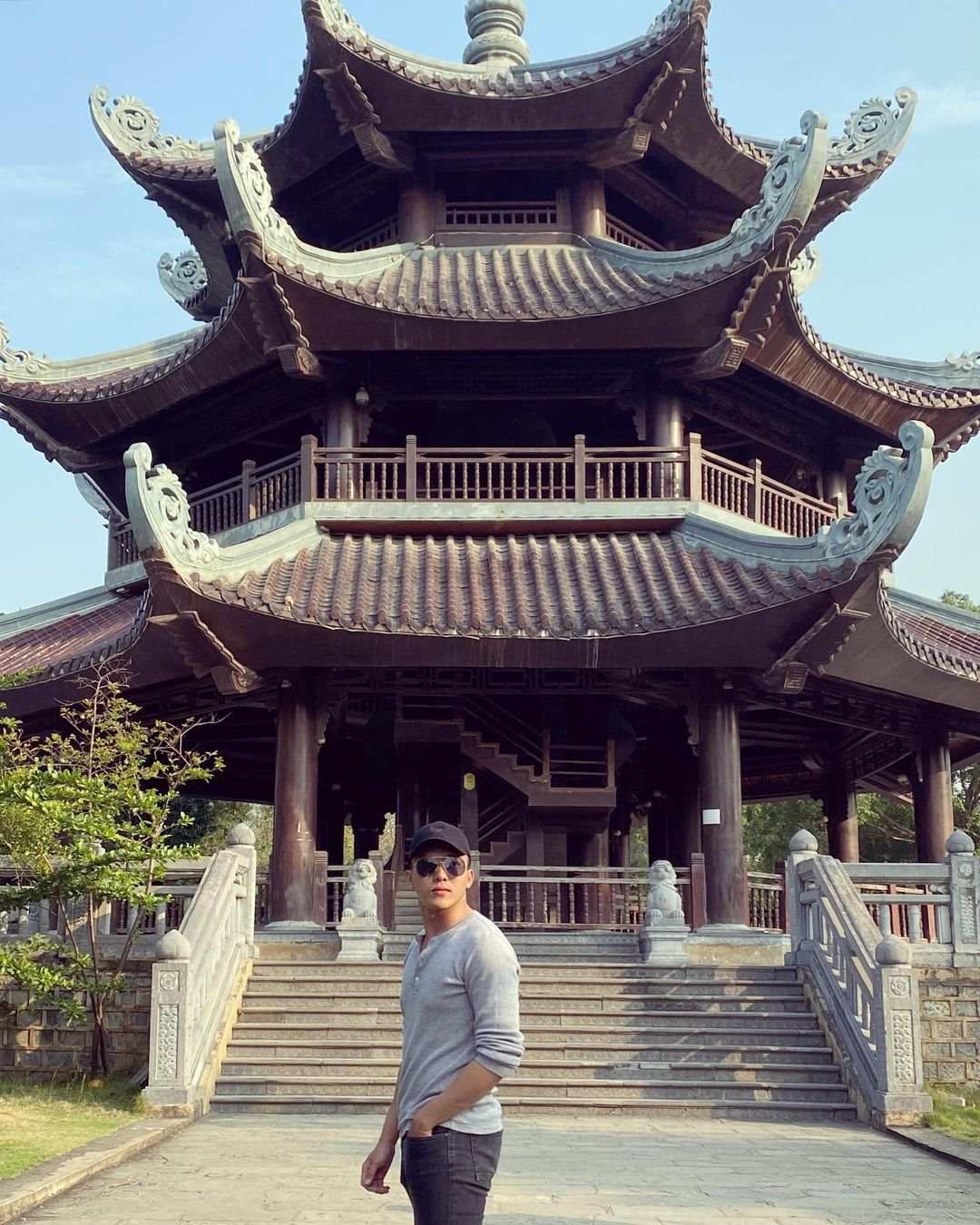
There will be many photo opportunities outdoors
Image credit: @trongthang92
Often located at the deepest part of a temple or pagoda, the main altar is the room where the most important deities are worshipped. It is there that most devotees gather to pray.
So you can imagine that it’s essential to maintain a solemn atmosphere here. No matter how fascinated you are with the carvings and decorations, refrain from whipping out your camera and pointing it straight at the altar. Prayers are not going to be pleased if they see you do so, and some especially pious people might even consider it blasphemy. If you really want to take a picture of the altar, maybe for academic purposes, do it from a side angle.
Not that you’ll want for photo opportunities if you avoid snapping the altar either. A lot of pagodas have impressive giant Buddha statues or towers standing in their outer yard, where you’re free to pose and snap as much as you like.
3. Leave your shoes out of the main altar hall
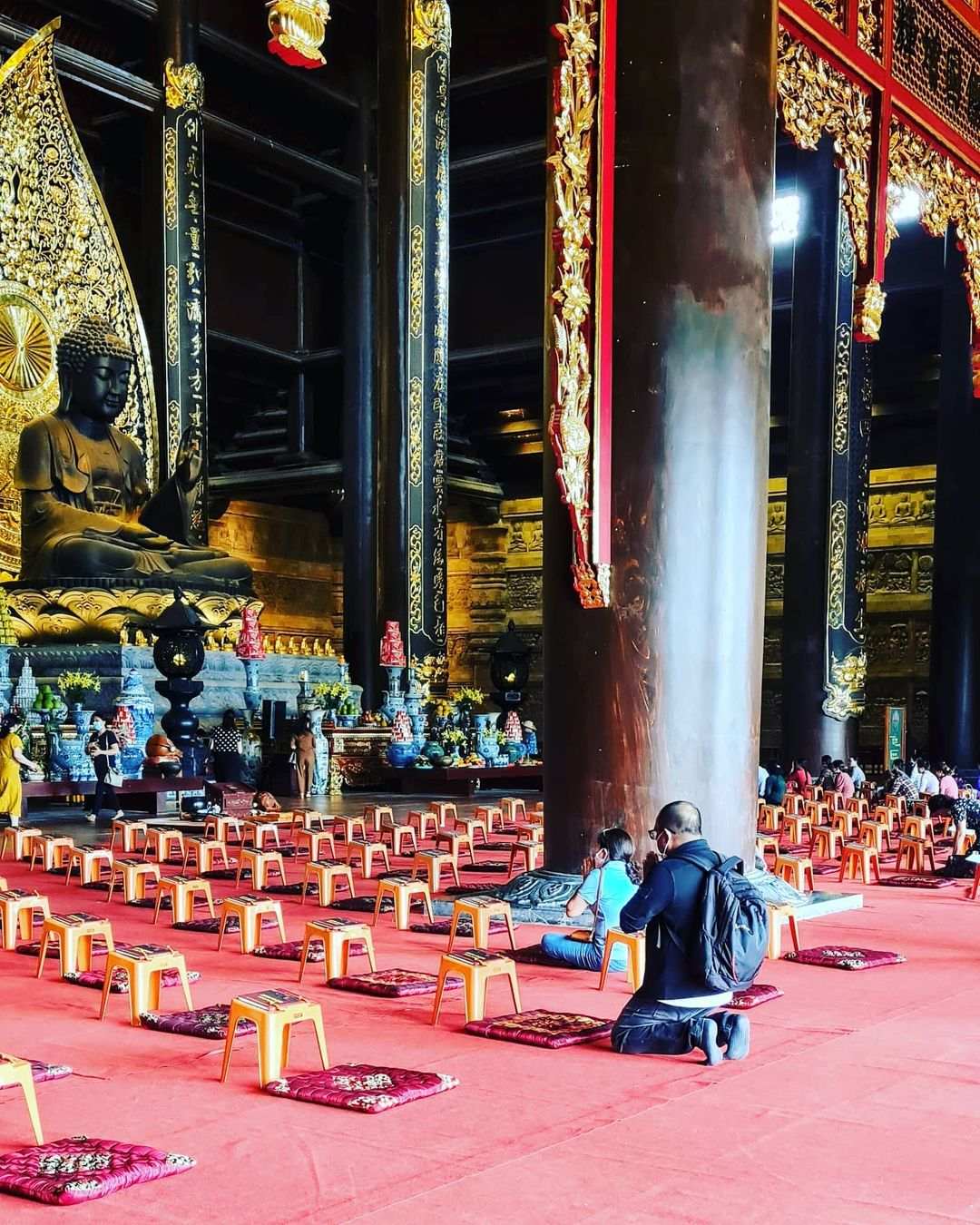
Image credit: @caravinda
We’ve already explained the importance of the main altar in a pagoda, so it shouldn’t surprise you that some pagodas would want to keep theirs clean by asking guests to leave their footwear outside of the main altar hall.
Now, this doesn’t apply to every place of worship out there – some simply welcome too many visitors a day to demand everyone to enter barefoot. However, keep it in mind, and before you enter the main altar, look around to see if there are signs asking you to take off your shoes first.
Vietnam etiquette you should know
It is true that all the Vietnamese etiquette and customs can appear overwhelming at first to someone not born into them. However, don’t let that deter you from exploring our beautiful country and its rich history.
And don’t be afraid to make mistakes either. Nobody is gonna blame you for it. If anything, we’re all too happy to share our culture with an international friend.
For more stories, check out:
- Vietnamese Tết traditions and customs
- Vietnamese wedding traditions
- 8 traditional Vietnamese festivals
- 9 ghosts and demons in Vietnamese folklore
- 10 superstitions in Vietnam
Cover image adapted from @hichiko_nguyen and @caravinda
